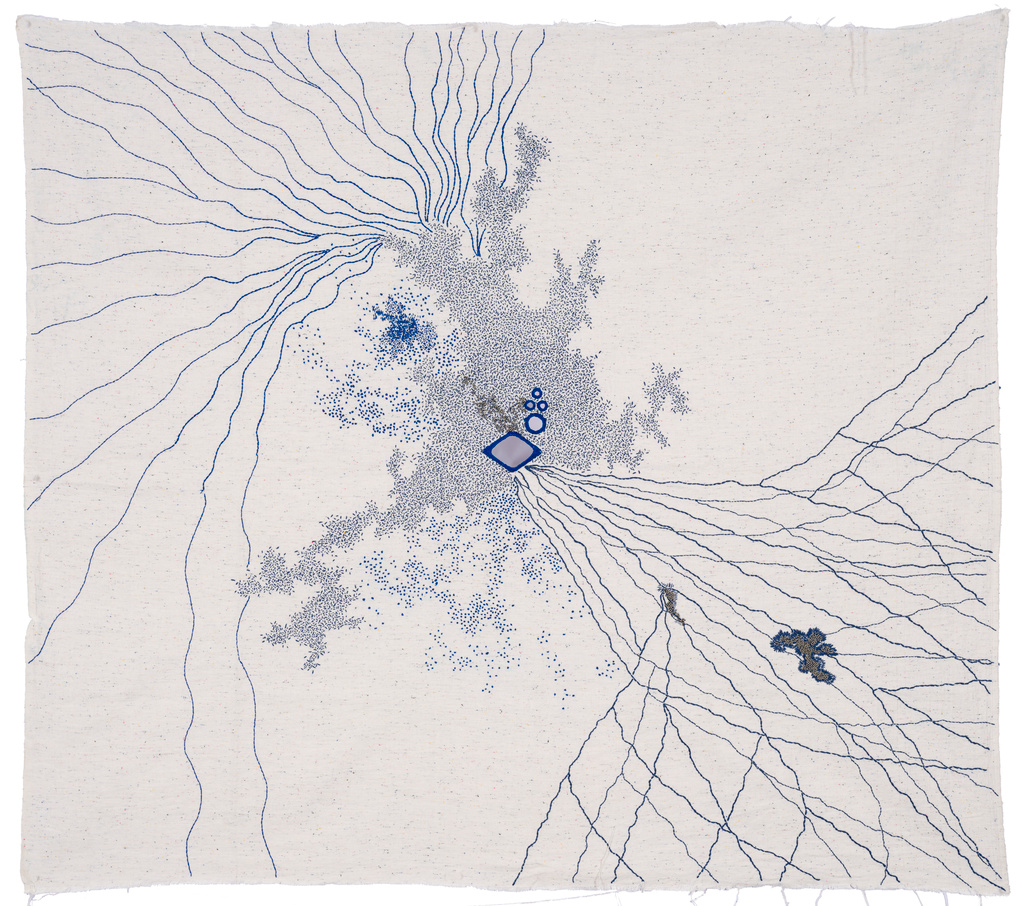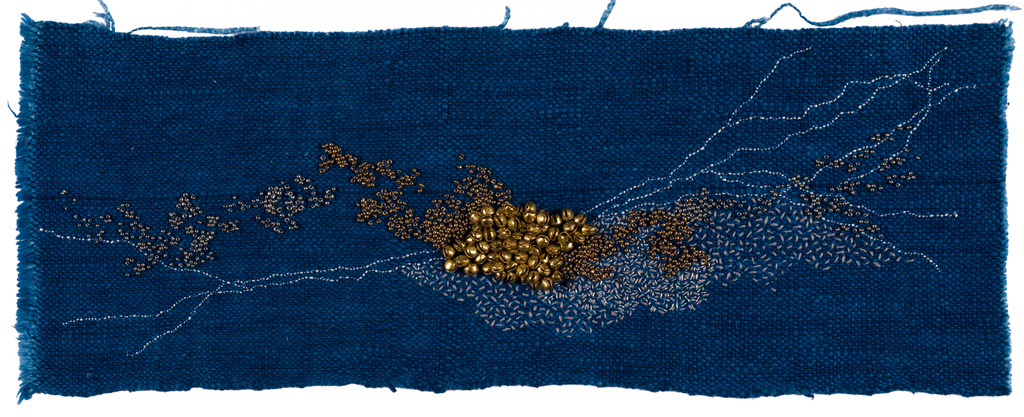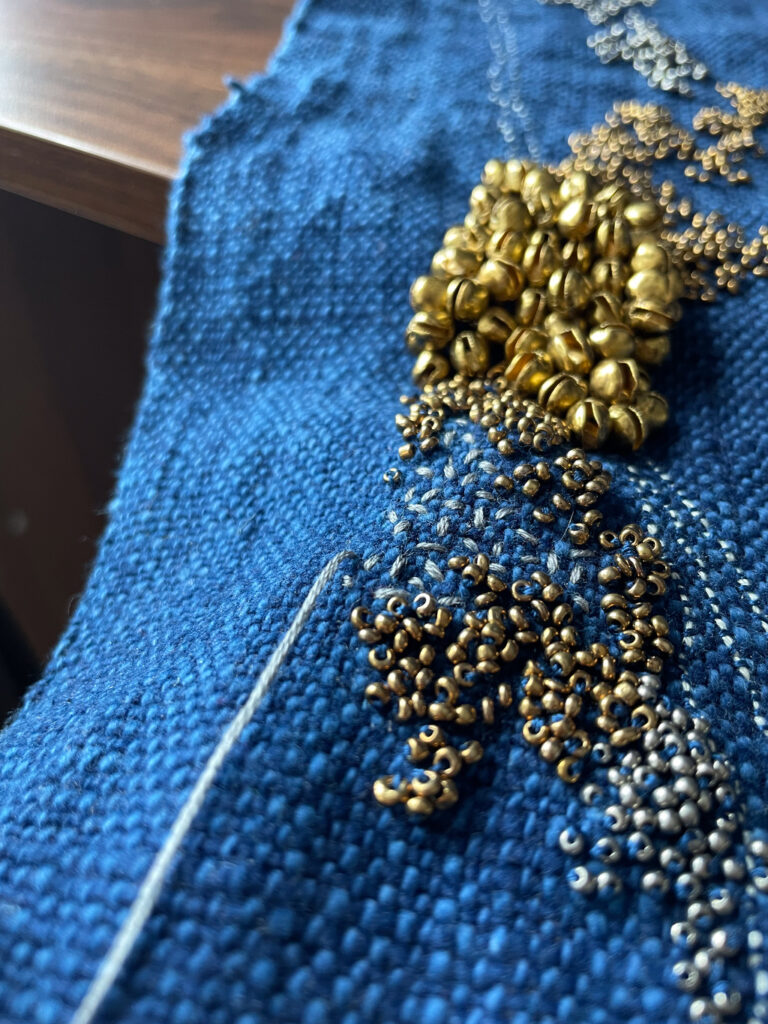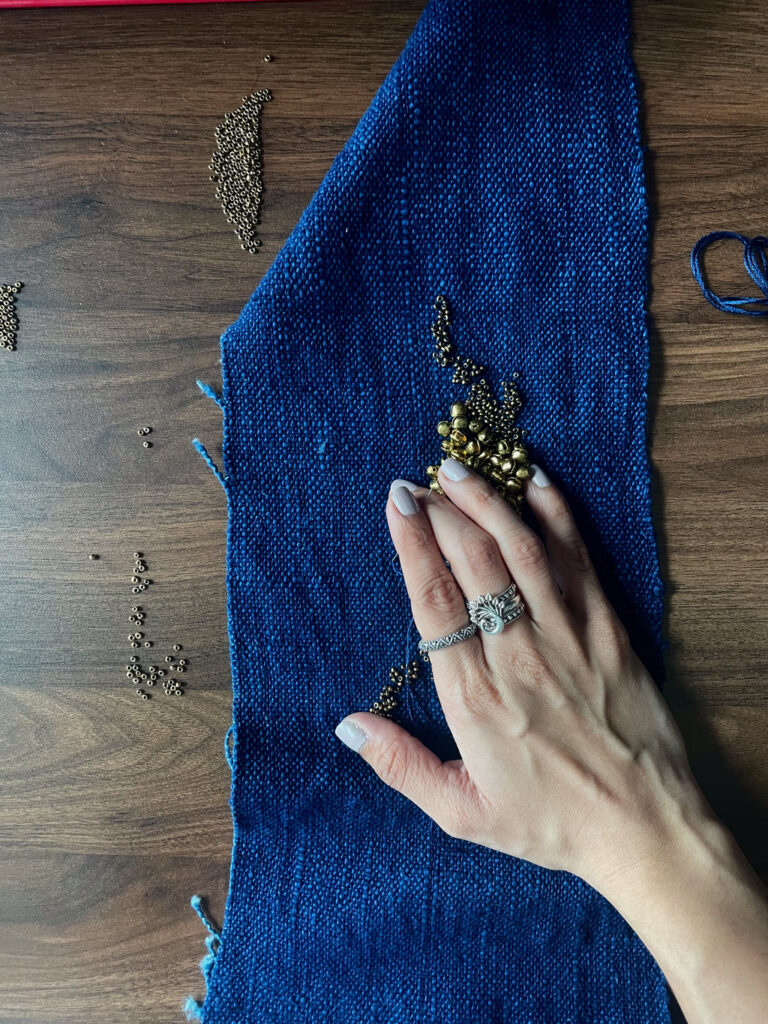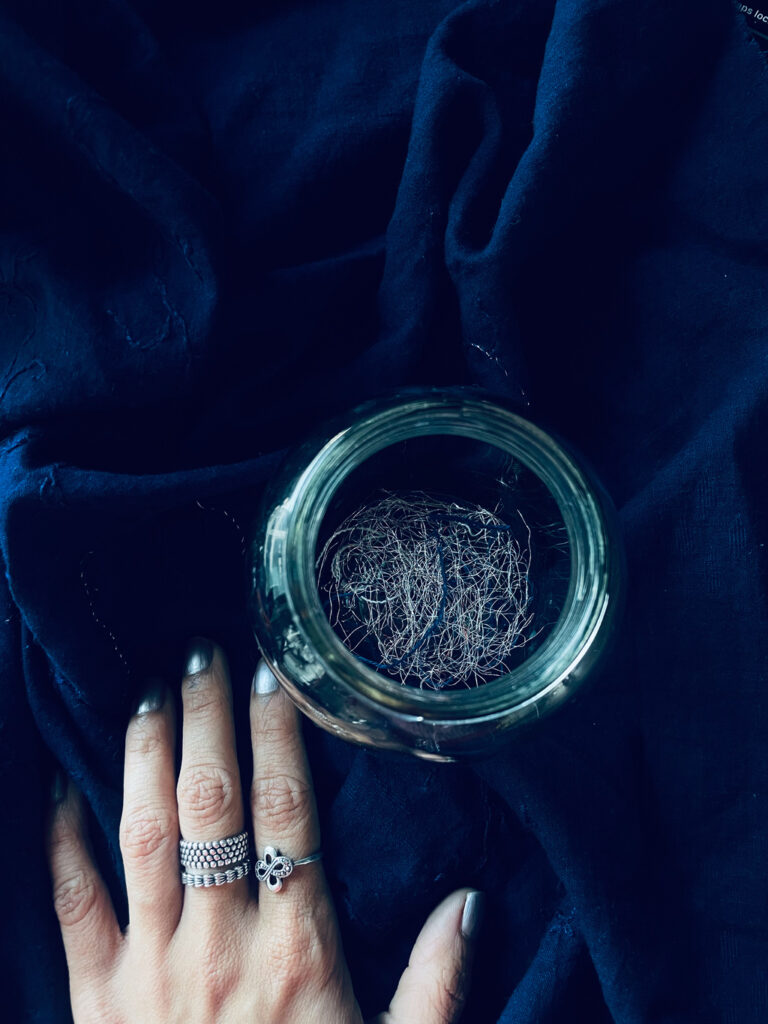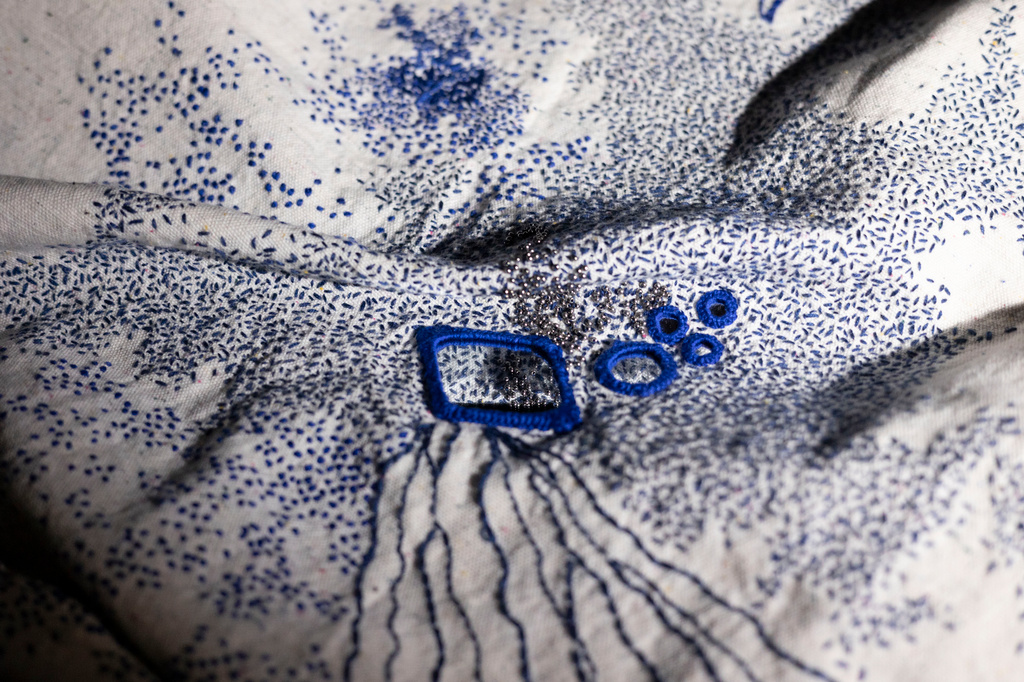Hansika Sharma travels to Kutch to find the indigo that will connect her to the skies above.
Some mornings, the studio smells like rain long before it actually arrives. The scent lingers in the silks, in the cotton threads, in my hands stained deep indigo-blue. I often think my body knows before I do that something is about to begin. Something slow, sacred, and demanding. This particular morning was one such beginning. I had lit the brass diya on the windowsill, the smoke from the dhoop spiralling into the cotton-filtered sunlight, and placed two blank stretches of cloth on my table, one for Moon in the Sun, the other for Eye of the Storm.
Both pieces had been growing inside me long before they touched fabric. They were fragments of feelings, dreams, and overheard whispers of my internal monologue. Moon in the Sun had come first as an image during a meditation. A golden sun, not burning, but glowing with coolness, and nestled inside it, a quiet, full moon. That image lodged itself in me like a seed. I couldn’t unsee it. I didn’t want to.
“Moon in the Sun”: Binding Opposites
- Hansika Sharma, Moon in the Sun, 2023, Embroidery on indigo dyed cotton fabric 6 x 17cm
This work became a silent inquiry into duality. I wanted to explore how the masculine and feminine don’t just coexist but fuse, melt, and dissolve into each other. I’ve always felt both inside me, sometimes in harmony, other times in tension. The fabric I chose was ahimsa silk, gently gathered, no violence, no rupture. It felt right to let softness be the base.
I spent the afternoon with the dyers, stirring slowly, chatting in quiet Gujarati, letting the silk absorb sky after sky.
For the dye, I travelled out to a small village in Kutch where I’ve been sourcing natural pigments for years. The indigo vats were breathing that day alive, gently bubbling, releasing their musky scent. I asked for a particular bath that wouldn’t go too dark. I needed the blue to speak of the moon, but not overpower the golden silk thread I was planning to embroider with. I spent the afternoon with the dyers, stirring slowly, chatting in quiet Gujarati, letting the silk absorb sky after sky.
Back in the studio, the embroidery began. I always start with drawing a symbolic map of what the work wants to become. The moon was rendered as concentric circles, stitched in zari and indigo thread, the sun as fractured rays, stitched with mustard-dyed silk. The meeting point where the moon dissolves into the sun was the most laborious. I stitched through the nights. It’s like weaving breath. Needle in, pause. Needle out, exhale.
I added tiny metal discs and antique bells from a market in Pushkar. They don’t ring unless you listen very closely, like a breath caught in memory. The sound was delicate, almost hidden. I liked that. It reminded me of the whispers of my mother’s anklets when she would walk through our house in the dark, half-moonlight, half-thunder.
What emerged was not a literal sun or moon, but a hybrid symbol. A woven spell. It felt like I had stitched my own dance of becoming of not being one thing or the other, but a held paradox. This work didn’t shout; it hummed.
“Eye of the Storm”: Holding Stillness in Chaos
- Eye of the storm, Work in progress
Eye of the Storm came from a very different place. It was a heavier birth. I was caught in a time where everything around me was moving: projects, conversations, grief, deadlines, joy, and anxiety. I would wake up with my hands clenched. I needed to make something that could hold that spiralling energy and offer a place to rest within it.
I chose cotton this time, coarse, handwoven, khadi. I wanted the friction. I wanted the cloth to resist a little. For dye, I turned again to indigo, but let it go deeper, nearly black in places. I wanted it stormy. I painted directly onto the fabric in loose strokes with indigo pigment mixed with rice paste binder. Then I let the monsoon air dry it unevenly, letting nature decide the movement of the colour. The edges curled like waves.
The embroidery was fierce. I didn’t plan too much. I stitched in spirals, not perfect, but intuitive, some tight, some broken. It was messy and fast. I let my fingers cramp. I didn’t correct the unevenness. I wanted the chaos to live in the thread.
But at the centre, I began to slow down. I stitched a perfect circle, silent, metallic, gold. It was the eye. Not decorative, but necessary. That circle took the most time. Every stitch had to be aligned. There, in the middle of everything, I stitched stillness.
I attached a fringe of metal bells around the perimeter, recycled from camel harnesses, oxidised and heavy. They clinked loudly. Not pretty. They made the kind of sound that doesn’t fade into the background. It reminded me of the noise we carry in our minds, rattling, always close.
One afternoon, while stitching, a thunderstorm broke outside. I didn’t stop. The storm became part of the rhythm, and the metal bells echoed the thunder. My studio was vibrating, the fabric shaking on the frame. But the centre of my stitched eye remained still.
When I finally stepped back, it looked less like a textile work and more like a diagram of emotional weather. That was never the plan, but often, the work tells you what it has become only after you finish.
Making as Becoming
Both works demanded something different from me Moon in the Sun asked for surrender, gentleness, the ability to hold paradox. Eye of the Storm asked for honesty, movement, and fierce presence.
I often say my hands know before I do. When I touch thread, I remember things I don’t have language for. When I cut cloth, I feel my heartbeat slow down. When the needle moves through dyed silk or storm-painted cotton, it makes a sound: a hush, a rip, a whisper. That sound is my real diary.
I look at these works now, mounted side by side in the studio. They don’t speak the same language, but they echo each other. One glows, one crackles. One is lunar, the other electrical. One is a prayer, the other a spell.
Sometimes I wonder if the making of a work is the actual art, and the final piece is just the residue. What I remember most isn’t what these works look like. It’s how I felt dyeing under the Kutch sun, or how the thunderstorm in July stitched itself into the fabric without asking.
There’s a kind of time that embroidery teaches you. Not the mechanical kind. But the time of growth, pause, eruption, and silence. I stitch because it lets me live inside that rhythm. And because it remembers for me everything I am not yet ready to say, it says slowly, thread by thread.
About Hansika Sharma


